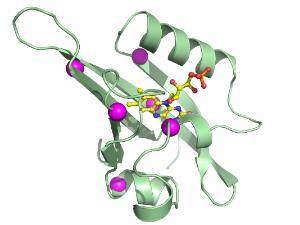Professor John Christie
My lab investigates the use of photosensory motifs to generate new optogenetic tools with potential applications in neural silencing and the optical control of behaviour responses. Our work also extends to developing new oxygen-independent fluorescent reporter tools to non-invasively track viral and bacterial infections.
Research
Optogenetics is an emerging field that combines optical and genetic approaches to non-invasively control cellular events with equisite spatiotemporal control. The repoertoire of light-sensitive proteins used for devising new optogenetic tools is rapidly expanding. Light, Oxygen or Voltage sensing (LOV) domains represent new contributors to the optogenetic tooklkit. These flavoprotein modules are derived from plant and bacterial photoreceptors that respond to UV-A/blue light. We have recently engineered the LOV domain to function as a new green fluorescent protein (FP) with several advantages over existing FPs: it is small in size (100 amino acids), its fluorescence is oxygen-independent and pH stable and it can be engineered to withstand high temperatures. We are therefore interested in exploiting the LOV domain and other photo-responsive proteins to artifically regulate and image a variety of biological processes.

Protein structure of iLOV: an engineered flavin-based fluorescent protein

